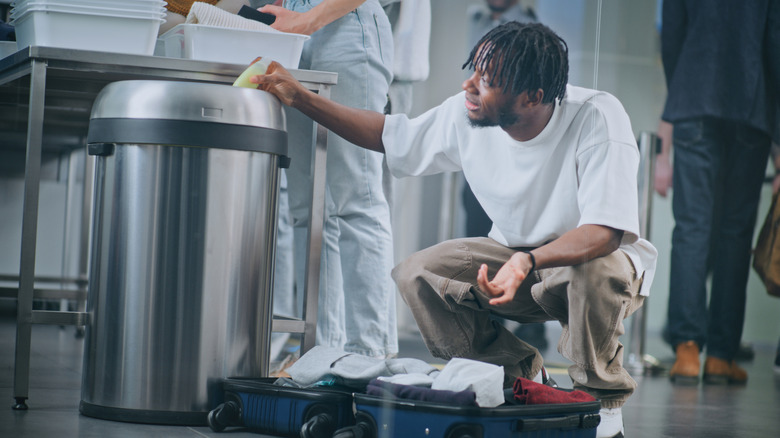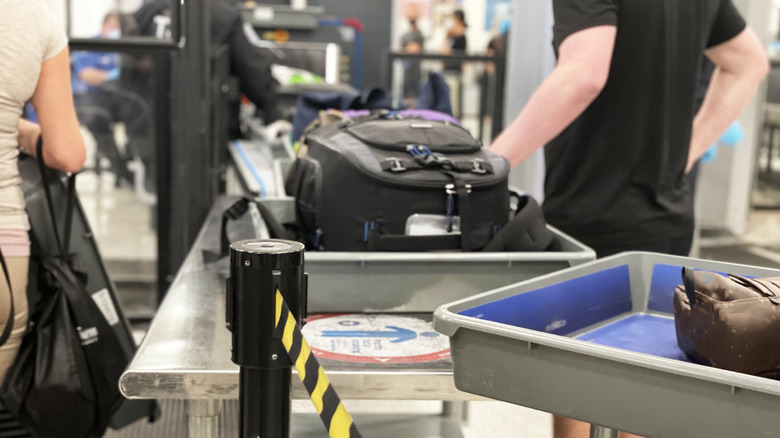Why The TSA Liquid Rule Still Exists For Carry-Ons (And How To Properly Pack Them)
Dealing with a busy airport is enough to make anyone never want to travel again. The long lines, the hassle of airport security, and the cranky passengers can all be too much to bear. One of the worst parts of the process can be the liquid rule, which is just annoying enough to be maddening. But what's the purpose of it?
It started in 2006, following the discovery of a terrorist attempt to sneak explosive chemicals in soda bottles onto a plane. The 3-1-1 rule was introduced soon afterward, restricting liquids to 3.4 ounces per container, packed in a one-quart clear resealable bag. Only one bag per person is allowed, and passengers can bring 3.4 ounces or less each of shampoo, conditioner, mouthwash, toothpaste, and lotion. Former TSA administrator Kip Hawley wrote in 2008 that the rule was necessary because terrorist threats would never disappear, though he believed the restriction would end in 2010 due to advances in X-ray technology. But the TSA said that until it has the ability to implement detection tech in every airport, the 3-1-1 rule will remain in place.
TSA refers to the liquid rule as the liquids, aerosols, and gels rule, stating that the clear bag must be removed from luggage before going through checkpoint security. The 3-1-1 rule was amended for a short time in 2020 due to the Covid-19 outbreak, and allowed up to 12 ounces of hand sanitizer per passenger. But with the exception of breast milk and baby formula, the rule is still very much in effect.
TSA's liquid rule could be on its way out
While the thought of lugging a Ziplock bag inside a carry-on to accommodate TSA's liquid rule seems like more of a headache than it's worth, there are options for travelers who need to bring such items onboard. Small personal travel-size kits, often labeled "TSA Kits," contain items like deodorant, toothpaste, shaving gel, and shampoo in approved sizes to avoid any delays. But while many airline travelers are accustomed to purchasing such kits, could the liquid rule ever be lifted?
According to CNN in 2022, 3-D technology exists that could make the 3-1-1 rule obsolete. That tech is known as computed tomography, or CT, and it provides a clearer picture of what's inside a carry-on as the bags are going through the scanner. With this better system in place, limits on liquids would no longer be necessary, and those items, as well as electronics, could remain packed, instead of having to be removed for inspection. TravelPerk reported in 2023 that the new CT tech was making an impact, with the United Kingdom increasing its liquid limit from 100 ml to 2 liters.
However, a TSA spokesperson told Travel & Leisure in 2024 that U.S. airports wouldn't be fully equipped with the new CT system until 2040. Until then, travelers will likely have to endure the 3-1-1 rule. At the very least, the airline industry seems to be heading in the right direction.

